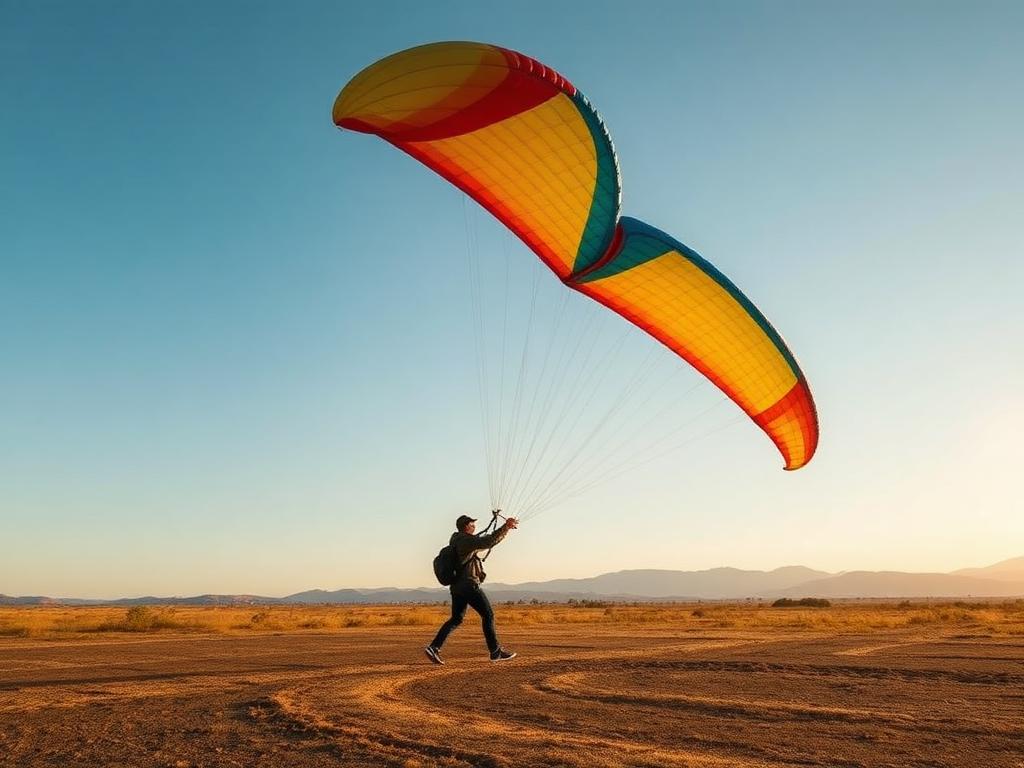Master essential ground handling techniques that will dramatically improve your launch success and overall flying confidence.
Ground handling is often overlooked by eager pilots wanting to get airborne, but it's arguably the most important skill in paragliding. Superior ground handling directly translates to safer launches, better in-flight control, and increased confidence.
Why Ground Handling Matters
Every launch and landing involves ground handling. Poor ground handling leads to aborted launches, damaged equipment, and potentially dangerous situations. Conversely, excellent ground handling makes launching look effortless and builds muscle memory for critical situations.
Basic Ground Handling Setup
Choose appropriate conditions for practice: light, steady winds (5-15 km/h) provide ideal learning conditions. Use a large, flat area free of obstacles. Start on flat ground before progressing to slopes.
Check your setup carefully: ensure lines aren't tangled, wing is properly laid out, and you're connected correctly. Take time to organize your lines systematically - this habit will serve you well throughout your flying career.
Forward Launch Technique
Begin with the wing spread in a horseshoe shape behind you. Check wind direction and adjust your position accordingly. Apply gentle, progressive pressure to the A-lines while moving forward smoothly. The key is consistent pressure rather than sudden jerks.
As the wing rises, focus on keeping it centered overhead. Use small weight shifts and gentle brake inputs to maintain control. Practice bringing the wing up slowly and setting it down gently repeatedly.
Reverse Launch Mastery
Reverse launches are essential for stronger wind conditions and provide superior control during the critical inflation phase. Turn to face your wing while maintaining proper line organization. Use both A-lines and rear risers for progressive inflation control.
The timing of your turn back to face forward is crucial - practice this timing extensively. You should turn when the wing is stable overhead and you're ready to commit to launch.
Advanced Techniques
Kiting (keeping the wing flying while remaining on the ground) develops exceptional wing feel and control. Start with gentle conditions and progress to stronger winds as your skills develop.
Learn to handle asymmetric inflations and partial collapses on the ground. These skills directly transfer to managing similar situations in flight.
Building Progressive Skills
Start with basic inflations in light wind, focusing on smooth, controlled movements. Progress to stronger winds and more challenging conditions gradually. Practice in different wind directions to develop versatility.
Set specific goals for each practice session: number of clean inflations, time spent kiting, or successful reverse launch transitions. Track your progress to maintain motivation.
Equipment Considerations
Ground handling is harder on equipment than flying, so inspect your wing regularly for wear. Practice on grass when possible to reduce abrasion damage.
Consider using an older wing for intensive ground handling practice to preserve your main wing's condition.
Making It Routine
Incorporate ground handling into your regular flying routine. Even experienced pilots benefit from regular practice. Use ground handling as a warm-up before flying and as skill maintenance between flying seasons.
The investment in ground handling skills pays enormous dividends in flying safety and enjoyment. Pilots with superior ground handling consistently have better launches, more confidence, and fewer equipment problems.

